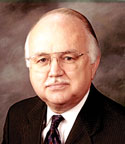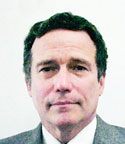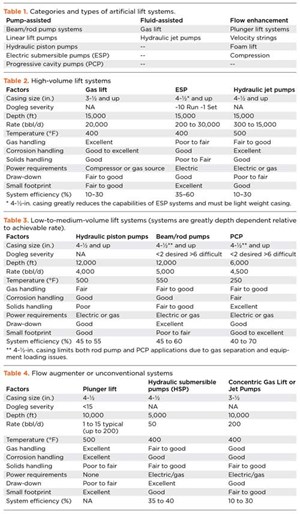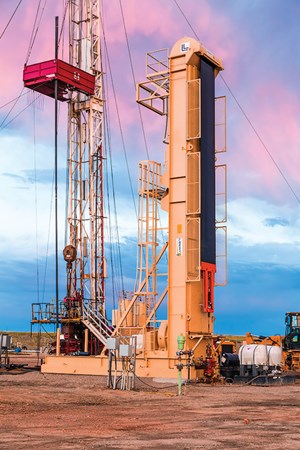What’s new in artificial lift?, Part 1
Artificial lift technologies are wide and varied. The term, artificial lift, applies to numerous tools, equipment, controls, instruments, computer hardware and software, technologies and techniques used to increase the flow of liquids (usually crude oil, water or a mix of oil and water along with natural gas) from a production well. The lift can be achieved mechanically through the use of a pump. It can be as simple as altering the well’s flow regime by installing a velocity string. Alternatively, lift can be achieved by decreasing the weight of the hydrostatic column in the well by injecting gas into the liquid at the desired depth.
In this report, we discuss three categories of artificial lift systems: (1) pump-assisted systems; (2) fluid-assisted systems; and (3) flow enhancement techniques. Within these three categories, there are at least eleven types of lift technologies. In each category there also exist unconventional or emerging technology types of lift. Table 1 identifies the three main categories and the corresponding methods of artificial lift within each category. Tables 2–4 provide a broad perspective on several design criteria and limitations of various lift systems.
BEAM/ROD LIFT DEVELOPMENTS
The basic beam rod pump system consists of three components: a surface beam pump; a connecting rod string; and a downhole plunger pump. However, these systems are more complex then this simple description implies.
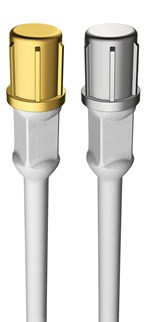
Next generation sucker rods. Until now, sucker rods have been manufactured with conventional steel grades, achieving acceptable performance in non-corrosive or benign environments. However, downhole operating conditions are becoming more demanding and producers face corrosive environments and high loading conditions. This has led to an increase in premature sucker rod failures due to fatigue and corrosion fatigue mechanisms.
To overcome these increasingly challenging conditions, Tenaris has developed the new AlphaRod series of sucker rods, designed to satisfy current operative conditions of mature conventional wells and non-conventional wells. These products offer superior toughness, extended lifespan due to increased corrosion resistance under alternative loads and higher service loads in both beam pumping and progressive cavity pumping (PCP) applications.
This new series of sucker rods includes two grades, the AlphaRod HS High Strength and AlphaRod CS Corrosion Service, Fig. 1. The AlphaRod HS High Strength was specifically developed for very high loads in medium corrosive environments, offering improved performance compared to conventional high-strength sucker rods. The AlphaRod CS Corrosion Service is a solution for corrosive environments that can withstand higher loads than traditional (API) sucker rods, Fig. 2.
The AlphaRod series was launched after four years of R&D activities that were focused on defining new steel chemical composition and the design of a special heat treatment process that guarantees the enhanced features and quality of the final products.
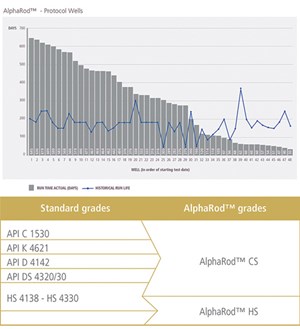
Steel is produced with ultra-clean manufacturing practices that allow a reduction in elements like phosphorus, sulfur and oxygen, ensuring low levels of non-metallic inclusions and an improved capacity to resist sour conditions. During the rolling process, a rigorous control of temperature and grain size takes place along with the inspection of longitudinal and transversal discontinuities and internal defects.
A martensitic transformation higher than 90% is the result of the strict control of the chemical composition and the optimized heat treatment process, which helps to prevent the creation of micro-constituents that reduce the toughness of the material. This fully integrated production process (that begins in the steel shop and continues until the final heat treatment) and the tight product and process controls guarantee the quality and reliability of this new product.
A program of tests was conducted to verify the enhanced properties of both the AlphaRod HS and AlphaRod CS, including the NACE test (National Association of Corrosion Engineers) and fatigue full-scale testing in neutral (air) and corrosive (CO2 and H2S) environments. The fatigue tests in corrosive environments simulated the harsh operating conditions that oil and gas companies currently face.
The AlphaRod series of sucker rods has been applied in mature conventional and non-conventional fields located in different regions of the world with outstanding results. All the wells that were part of the protocol are still operative.
Electric rod rotator systems. National Oilwell Varco (NOV) provides a wide variety of field-proven, highly engineered artificial lift technologies under their completion and production solutions segment. Their systems include automation and monitoring equipment, production service hookup, hydraulic rod pump systems, PCP systems, and tubing rotators. NOV’s rod rotator systems are designed to increase field efficiency and reliability.
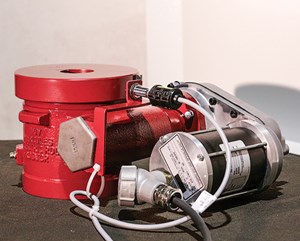
Released in the first-quarter 2016, NOV’s Hercules electric rod rotator (ERR) represents an evolution from traditional mechanical rod rotators, Fig. 3. The Hercules ERR is actuated using a low-voltage electric motor with a high gear ratio coupled to a control system or standalone control box. Using an electric motor eliminates the need to install a traditional mechanical arm or the cable used to actuate the gear, which increases reliability. A newly integrated rotation sensor, coupled with the control box, monitors performance and alerts operators when failures occur. In addition, the Hercules ERR provides greater control over rotations per day and reduces torsional rod stress.
NOV also developed the smart rod rotator, which builds on sensor technology used in the Hercules ERR, to address premature wear due to wellbore deviations, Fig. 4. The smart rod rotator automates the routine of checking rod rotator integrity and, when combined with rod pump controllers (RPCs), allows for remote monitoring and alarm capabilities, reducing on-site time and maintenance. Rod string rotation, used in conjunction with rod guides, removes paraffin from inside the production tubing and distributes wear evenly for rods and rod coupling. The combination of technologies extends the period between workovers while minimizing downtime.
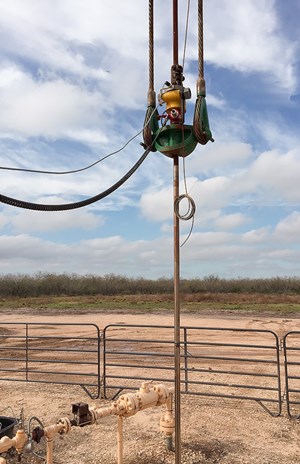
The smart rod rotator has a programmable logic controller (PLC) that will issue a fault or alarm to the RPC if a certain number of rotations do not occur within a user-specified timeframe. The PLC also sends a signal pulse, which is counted and stored in a viewable register, to the RPC every time a complete rotation occurs.
Hydraulic tubing anchor. Tubing anchors are primarily used for mitigating tubing movement (up and down) in rod pump artificial lift. The tubing movement is caused by the cyclic stroke of the plunger inside the barrel at the bottomhole pump. The drawing of the plunger on the upstroke causes the tubing to rise while the descending of the plunger on the downstroke causes the tubing to drop.
At anywhere from three to nine strokes/min., tubing wear can be severe and many times catastrophic, resulting in a hole in the tubing and the need to pull the well. Traditional mechanical anchors are the rival of the hydraulic tubing anchor. However, they come with several disadvantages: 1) required to turn to actuate even in deviated holes; 2) large diameter can create sand bridges and gas slugs; 3) many moving parts increase the risk of getting stuck; and 4) numerous open cavities create increased opportunities for scale and other detritus to form.
All of these disadvantages are overcome with Black Gold Pump and Supply’s new hydraulic tubing anchor, Fig. 5. It contains large bypass areas preventing sand bridges and fluid slugs. It has one moving part, which is actuated by pressure and not by tubing rotation, and it has a flush body design mitigating the opportunity for scale build-up.
Hydraulic tubing anchors are simple to install and extract. Hence, the ease of operation is a strong advantage of these units. Unlike a mechanical anchor, there is no need for surface manipulation to set a hydraulic anchor. Instead, hydraulic anchors are activated when the insert or tubing pump is set, and the pressure in the tubing string is greater than the pressure in the casing annulus. Simply unseat the pump to retrieve the anchor. The pressure will equalize and the anchor will no longer be in tension.
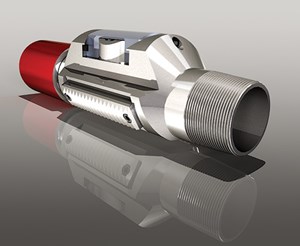
Black Gold has run more than 5,000 hydraulic anchors with key advantages being significantly reduced rig time/cost on installation, optimized gripping power to the casing and significantly reduced rig time/cost upon extraction.
Pump stroke optimization. Encline Lift’s pump stroke optimization (PSO) device is designed to address problems encountered when rod pumping in rapidly changing flow regimes observed with oil production from horizontal wellbores. Current RPC technology was developed for vertical wells. The application of RPCs to horizontal wells often results in frequent full spectrum speed changes and excessive low pump fillage events, both of which are undesirable.
A method many operators employ to mitigate this problem is to manually reduce the maximum working speed set point to a value slightly above that required to handle all the daily production. This intervention must be done routinely, and is counterproductive should the well see increased deliverability due to events such as downtime or offset fracs. PSO replaces human intervention by regularly adjusting the maximum working speed based on analysis of several hours of observed pumping speeds and low pump fillage events. The result is better pump fillage, which results in better rod string and equipment loading, and in some cases increased production. Also, operator personnel are free to address other, more important tasks.
Many RPC’s allow for the downstroke to operate at a slower speed than the upstroke. For RPC’s with this feature, the PSO device decreases the downstroke pumping speed preferentially, leaving the upstroke pumping speed unchanged until an operator-set differential is reached. This practice results in less “detrimental” pump slippage, since the percentage of time spent on the upstroke is reduced.
Pump slippage during the upstroke is termed detrimental, as it occurs when the standing valve is open, with every ounce of slippage resulting in one less ounce of fluid entry through the standing valve. The opposite is true for pump slippage during the downstroke, which is viewed favorably, and only occurs while both the standing and travelling valves are closed.
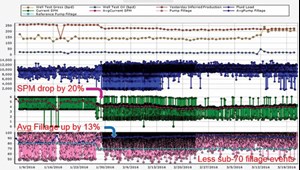
Downstroke pump slippage serves to increase the pressure between the two closed valves, and is actually helpful in opening the travelling valve. The additional time spent on the downstroke allows for more of this favorable pump slippage, but more importantly, it allows more time for evolving gas to rise then exit the rod pump’s gas anchor. This is valuable given the oil in the pump of a horizontal well is extremely live, unlike in vertical wells with a sump pump. Less slippage and better pump fillage both result in less strokes per day for the same production, which results in less downhole wear and less power consumption.
PSO field trials began in two Eagle Ford wells in March of 2015, with the successful results presented at the ALRDC Sucker Rod Pumping workshop in September 2015. A year later at the workshop, the results of a successful four well Bakken test were presented at the 2016 workshop, Fig. 6. Additionally, a case study on 20 Eagle Ford wells was presented at the SPE Artificial Lift Conference in Houston in October 2016 (SPE 181228). PSO has now been successfully implemented in the Permian basin, DJ basin, Bakken and Eagle Ford.
LINEAR LIFT PUMP DEVELOPMENTS
Linear lift pumping units can provide a cost-efficient, compact, lighter-weight alternative to traditional beam pumping units in many multi-pad, horizontal well applications.
New 366-in. long stroke pumping unit with continued advancement in operation monitoring. Last year in this feature, we mentioned that Liberty Lift Solutions had introduced a long stroke pumping unit with a stroke length of 306-in., the Liberty XL (extra-long stroke).
This year, Liberty Lift added a 366-in. stroke length version to its XL Pumping Unit product line, Fig. 7. The new unit is comprised of a 320 gear reducer with a 50,000-lb structure rating. The XL 366 long stroke pumping unit delivers significantly fewer cycles, at slower speeds, with higher volumes than conventional and enhanced geometry pumping units. The unit comes standard with features including a wireless load cell, hydraulic rollback system, upper proximity switch, vibration detection device, wire mesh personnel guards, positive displacement inner-tower oiling system, and cutting edge Unit Sentry operation monitoring.
The Unit Sentry monitoring system comes standard with all XL units. It offers communication for over speed detection, vibration detection, load sharing with high and low load shut down, polished rod and chain position, RPC and VSD pause and fault notifications, customized metering for the inner-tower oiling system, customizable operator defined faults, and multiple restart options due to external power failure.
The XL 366 helps address and solve numerous issues and production goals in horizontal and vertical well applications. These issues typically include elimination or reduction of initial and mid-size ESPs, rod lifting in high deviations, higher volume initial rod lift, and overall reduction in time, opex and capex costs from the initial form of lift to the secondary form.
In many applications, this unit can eliminate the purchase or rental of an intermediate ESP as well as assist in transitioning from initial ESP to rod lift sooner in the well’s life cycle. Its 366-in. stroke helps operators achieve upwards of 700 to 900 bpd in pump depths of 6,000 ft to 7,500 ft, while still pumping at slower speeds. This range of production from an XL benefits operators who experience a high number of ESP failures that are causing both downtime and costly repairs.
The XL 366 also targets highly deviated applications where other forms of lift have become inefficient or conventional rod lift is not feasible without excessive down time due to rod and tubing issues. The reduction of pump cycles at slower speeds curtails workovers and rod/tubing issues on troublesome wells.
The long stroke unit also operates efficiently in vertical well applications where initial artificial lift production is in the 700 to 900 bpd range and rod lift is the most efficient and economical option. In these applications the rod lift infrastructure can be installed during the first stage, enabling operators to keep all downhole equipment consistent through subsequent artificial lift stages.
HYDRAULIC JET PUMP DEVELOPMENTS
Hydraulic jet pumps are often deployed in wells that are difficult to produce due to challenging well geometry, fluid composition and reservoir conditions. When compared to other types of pumps, jet pumps can pass through and can be set in tighter wellbore deviations due to their size.
Jet pumps utilize the Venturi principle, converting high pressure fluid to a low pressure high velocity stream, which draws in the formation fluid. The power fluid and formation fluid commingle inside the throat and move through a diffuser increasing the pressure for lift.
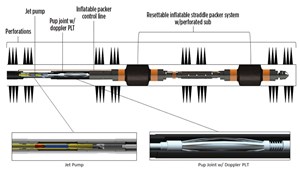
Focused production measurement system using a hydraulic jet pump. Production logs have been an industry standard for many years, but by themselves they are not always a reliable way to evaluate the complicated flow regimes in modern multi-stage wells. Production logs work well at determining the phases of flow in horizontal or vertical wells, but in multi-stage wells determining from which stage or cluster the production is originating is more of a challenge.
The focused production measurement system from Tech-Flo measures fluid entry and the phases of flow while the system is in the hole, Fig. 8. It uses the flexibility of a hydraulic jet pump to produce and stabilize the well while each zone or stage is isolated between straddle packers. It is movable and resettable.
The system increases and measures a flowing well’s production, produces and measures a dead well’s production, and can produce a zone or stage’s absolute open hole potential. It measures three-phase flow, temperature, static bottomhole pressure and flowing bottomhole pressure to determine a well’s in-flow performance. It can be run in real time or memory mode.
Conveyance methods include jointed pipe, coiled tubing or fiber coiled tubing. Suggested uses of this system include post-fracturing evaluation, pre-refracturing evaluation, and evaluation of vertical wells with stacked pay.
AUTOMATION AND CONTROL EFFICIENCIES
The costs to power artificial lift systems can be significant and overtime can represent the highest cumulative cost of pumping a well. Additionally, artificial lift control systems have become increasingly important to operators since production downtime for any reason is extremely costly.
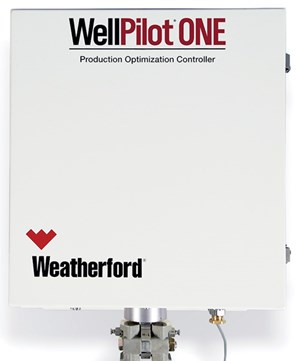
Universal controller multiplies the benefits of independent RTUs. Weatherford’s WellPilot ONE controller (Fig. 9) centralizes the management of all oilfield equipment to a single piece of hardware, enabling integrated, full-field asset monitoring and optimization for the life of the asset.
Typically, automating a producing field requires a variety of controllers and remote terminal units (RTUs) installed on different wells. Each controller independently collects, stores, and transfers data in near real time. Even when deployed on a well-by-well basis, automated control has significant benefits, including the ability to reduce energy use and maximize component service life.
In Colombia, an operator had a field with high gas-to-liquid ratio (GLR) and limited space available for surface equipment. After conducting a field analysis, the operator decided that a reciprocating-rod lift (RRL) system was the best alternative solution for the field, based on the space limitations and previous field conditions. In addition to the RRL system, WellPilot rod pump controllers provided continuous monitoring of well conditions. These newly installed systems eliminated most failures due to artificial-lift equipment, and ran for more than 800 days without intervention. A review of the client investment-versus-cost balance enabled continuing development in a new field.
These advantages in visibility and efficiency are exponentially increased by enabling the simultaneous monitoring and optimization of multiple wells, using various forms of artificial lift, from a single interface. The WellPilot ONE controller leverages edge computing and the “industrial internet of things” to streamline optimization throughout the productive life of the field.
This universal, life-of-well controller can be installed as soon as a well begins flowing and remains active as the well transitions from one form of lift to the next. For example, to switch from flowing to gas lift, the only change required of the operator is to obtain the appropriate software license. The same principle applies when the well transitions to the next form of lift, with the same controller remaining in place.
By avoiding changes to the monitoring-and-control infrastructure, the WellPilot ONE controller facilitates smooth lift transitions and significantly minimizes downtime. Compared to purchasing new controllers for each transition on each well, this universal solution saves approximately 50% in hardware and software expenses over the life of the field.
The controller includes built-in, advanced logic for electronic flow measurement and process control, and it is scalable for operations of all sizes. Other capabilities include oil, gas and water measurement; tank-level monitoring; well testing; hazardous-substances monitoring; and well control and shutdowns.
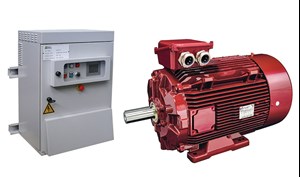
Innovative variable speed solutions for rod pump applications. A rod pump operating at fixed speed captures only part of the available production flow. Pin timers and pump off controllers help optimize production, but stress the rod and increase maintenance costs. Although standard variable speed drive (VSD) solutions provide flexibility they do not allow the lowest operating cost.
Leroy-Somer VSDs tackle these issues providing higher efficiencies and the possibility to save energy, Fig. 10. The typical operating cycle of a rod pump where the load varies with the rod position leads to poor overall efficiency when using standard induction motor solutions. It has a significant impact on operating costs. In addition, during part of the cycle the rod pump feeds energy back. This is often an issue, with mechanical stress on the system in fixed speed or energy management in variable speed.
Leroy-Somer’s patented variable speed solutions are uniquely designed for rod pump applications and include:
- Dyneo synchronous permanent magnet technology that provides higher efficiencies independent to the load.
- Powerdrive FX variable speed drive using a unique naturally regenerative technology that feeds any excess energy to the power supply.
Latest comparative measurements between direct on line (without variable speed drives) electric powered rod pumps and rod pumps powered by Leroy-Somer innovative variable speed solutions yielded energy savings exceeding 30% at the same production level.
Leroy-Somer was previously part of Emerson Electric Company. In February 2017, Leroy-Somer and Emerson Industrial Automation USA were acquired by Japan’s Nidec Corporation, one of the world’s largest comprehensive motor manufacturers.
PROACTIVE OPTIMIZATION
Proper selection of an artificial lift system should include an analysis of the individual well’s parameters and the operational characteristics of the available lift systems. Analysis should start when reservoir, drilling and completion decisions are being made; not after the well has been drilled and completed.
Artificial lift system selection service. Schlumberger’s LiftSelect lift method selection service simplifies the process of selecting the artificial lift strategy that best achieves an operator’s goals, based on objective analysis of economic and technical criteria in an integrated engineering workflow. Conventional artificial lift decision-making applications rely on manual workflows with a large amount of data scattered across multiple sources and forms. Sorting through this information and gathering the required pieces is a significant challenge. The LiftSelect service combines these workflows to help operators choose the artificial lift strategy that best suits their well and field conditions, not only for the beginning of the production cycle but for the entire life of the well.
The service uses available data to build reservoir models, well models, and economic performance models. When combined with production data gained through sampling and measurements, these models can be leveraged into a live, integrated asset model that forms the cornerstone of the LiftSelect service. This scientific approach encourages impartial decision-making, free of biases based on historical preferences or opinions for or against a particular artificial lift method. When coupled with reservoir models and network models, the service’s artificial lift strategy calculations ensure lower overall opex/bbl and accelerate production.
The objective of the streamlined workflow behind the service is to facilitate the decision-making process for selecting the most economically appropriate artificial lift strategy. Through the automated workflows and user-friendly interface, the service delivers results and recommendations about the artificial lift approach most likely to achieve the project’s economic expectations. Unlike conventional tools that try to make recommendations based on production and conditions at a single point in time, the LiftSelect service simplifies the engineer’s analysis, forecasting years of production for multiple artificial lift scenarios. Ultimately, this tool allows operators to improve the economics of their wells and fields with strategic decisions about artificial lift methods and transitions. ![]()
NEXT MONTH
Part 2 of this year’s “What’s new in artificial lift?” series in the coming June issue of World Oil will include a number of recent product developments associated with ESPs, PCPs, gas lift and plunger lift technologies.
